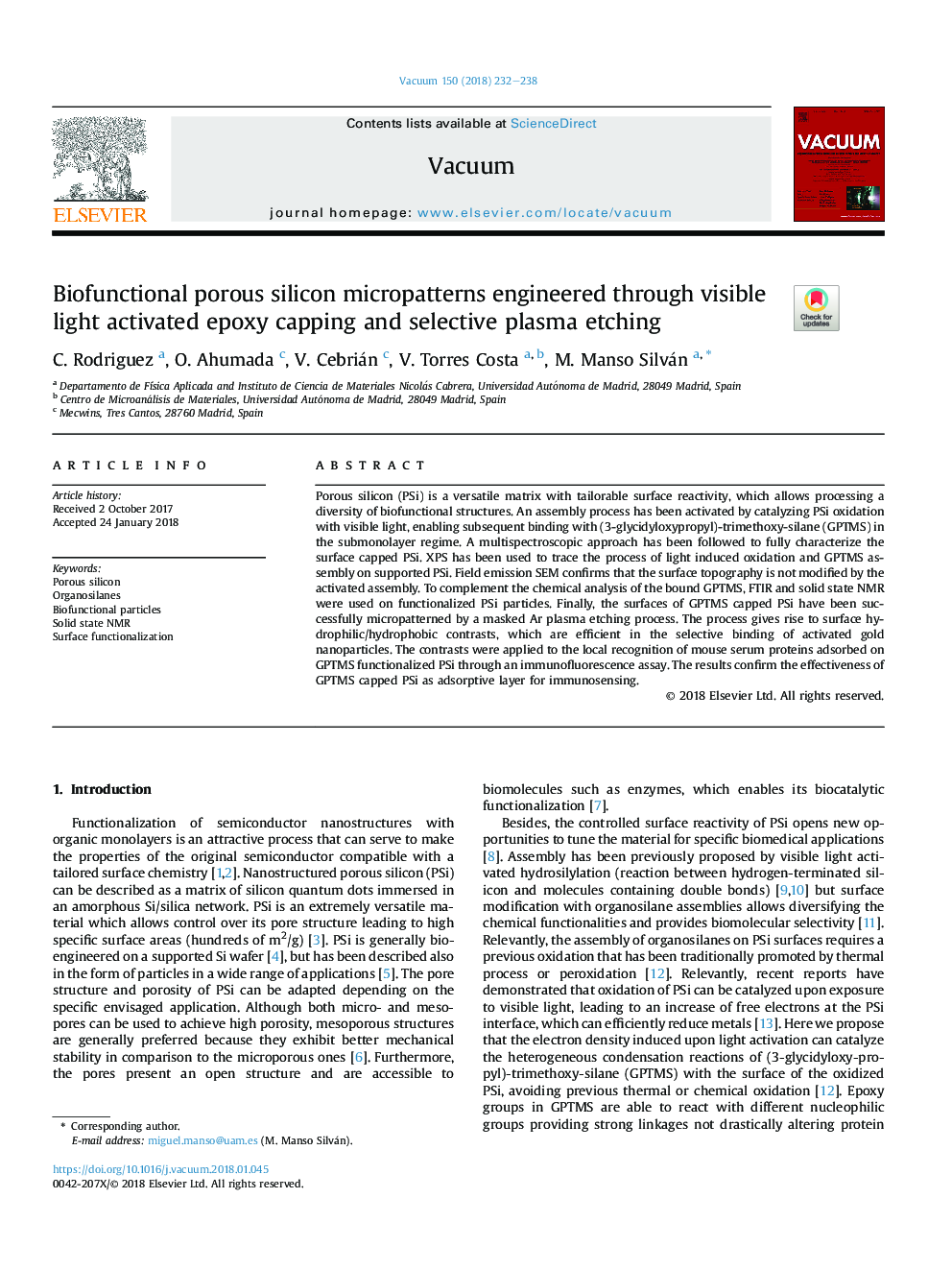| Article ID | Journal | Published Year | Pages | File Type |
|---|---|---|---|---|
| 8044498 | Vacuum | 2018 | 7 Pages |
Abstract
Porous silicon (PSi) is a versatile matrix with tailorable surface reactivity, which allows processing a diversity of biofunctional structures. An assembly process has been activated by catalyzing PSi oxidation with visible light, enabling subsequent binding with (3-glycidyloxypropyl)-trimethoxy-silane (GPTMS) in the submonolayer regime. A multispectroscopic approach has been followed to fully characterize the surface capped PSi. XPS has been used to trace the process of light induced oxidation and GPTMS assembly on supported PSi. Field emission SEM confirms that the surface topography is not modified by the activated assembly. To complement the chemical analysis of the bound GPTMS, FTIR and solid state NMR were used on functionalized PSi particles. Finally, the surfaces of GPTMS capped PSi have been successfully micropatterned by a masked Ar plasma etching process. The process gives rise to surface hydrophilic/hydrophobic contrasts, which are efficient in the selective binding of activated gold nanoparticles. The contrasts were applied to the local recognition of mouse serum proteins adsorbed on GPTMS functionalized PSi through an immunofluorescence assay. The results confirm the effectiveness of GPTMS capped PSi as adsorptive layer for immunosensing.
Related Topics
Physical Sciences and Engineering
Materials Science
Surfaces, Coatings and Films
Authors
C. Rodriguez, O. Ahumada, V. Cebrián, V. Torres Costa, M. Manso Silván,
